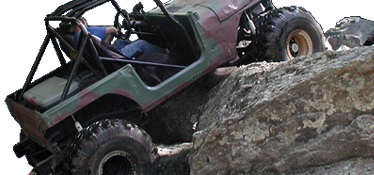Blending used oil and vehicle fuel
Army Logistician, Nov-Dec, 2003 by Arthur Kegerreis
E-mail Print Link Cost-conscious maintenance managers are constantly seeking ways to do business with less money, fewer people, and minimal changes to the workload or workspace. Oil and fuel blending is one process that meets all of these criteria and Is mechanic friendly.
Fuel blending may be performed when directed by the Army Oil Analysis Program laboratory or during any unscheduled maintenance when an oil change is required. Waste motor oil from a vehicle's crankcase is blended with diesel fuel or JP8 fuel from the vehicle's fuel lank. After passing through a filter, the oil and fuel mixture is put into the vehicle's fuel tank to be burned as fuel. Fuel blending should not be performed if the oil has any sign of antifreeze contamination.
More
Articles of Interest
GreenHunter Energy Turns Houston Waste Oil Storage Site Into Renewable Fuels...
Bio-crude turns cheap waste into valuable fuel.
Sweet fuel source
FUELING A GREEN REVOLUTION
'Frisco aims to include all eateries in oil reclamation Related Results
GreenHunter Energy Turns Houston Waste Oil Storage Site Into Renewable Fuels...
GreenHunter Energy Turns Houston Waste Oil Storage Site Into Renewable Fuels...
Bio-crude turns cheap waste into valuable fuel.
Sweet fuel source
FUELING A GREEN REVOLUTION
The oil and fuel blending system consists of a drain pan for collecting the waste oil and a pump and blender with hoses. The blending device (see photo below) draws oil from the drain pan and fuel from the vehicle fuel tank, blends and filters the mixture, and returns the blend to the vehicle fuel tank. The filter removes virtually all contaminants that could potentially damage engine components except antifreeze.
The advantages of using the system are many--
* Any traditional diesel engine, such as a vehicle or generator, can use the system.
* The blending process takes only an average of 15 minutes.
* The cost of one gallon of diesel fuel is saved for each gallon of waste oil blended.
* The cost and labor involved in collecting, storing, and transporting waste oil is nearly eliminated.
* The blend is consumed with no adverse effects on the engine or any unusual emissions into the atmosphere.
* Reusing the oil prevents most oil spills and the resulting cleanup costs.
* The process is an environmentally friendly method of disposing of used oil.
For 33 vehicles using the oil blending process over a 3-month period during Operation Joint Forge in 2002
* The blending operation required 12.25 hours as opposed to 49.5 hours for a traditional oil and filter change, saving 37.25 hours, or $745.
* Mechanics blended 70.5 gallons of oil, so 70.5 gallons of fuel did not have to be purchased.
* No storage, record keeping, or $50 disposal fee were required for 70.5 gallons of waste oil.
Oil blending has many advantages and few disadvantages. Probably the most significant reasons for using this process are that it eliminates fuel waste and helps keep the environment clean. The system is approved by the Tank-automotive and Armaments Command and should be required in all maintenance activities.
CHIEF WARRANT OFFICER (W-4) ARTHUR KEGERREIS IS A MEMBER OF COMPANY B, 728TH MAIN SUPPORT BATTALION, 28TH INFANTRY DIVISION, PENNSYLVANIA ARMY NATIONAL GUARD. DURING A 12-MONTH DEPLOYMENT TO BOSNIA-HERZEGOVINA, HE SERVED AS THE TASK FORCE EAGLE MAINTENANCE OFFICER. AS A CIVILIAN, HE IS THE AUTOMOTIVE WORKER SUPERVISOR AT ORGANIZATIONAL MAINTENANCE SHOP # 15 AT FORT INDIANTOWN GAP, PENNSYLVANIA. HE IS A GRADUATE OF THE WARRANT OFFICER SENIOR COURSE.
COPYRIGHT 2003 ALMC
COPYRIGHT 2003 Gale Group
http://findarticles.com/p/articles/mi_m0PAI/is_6_35/ai_110459244

 WVO is yesterdays news.....
WVO is yesterdays news.....